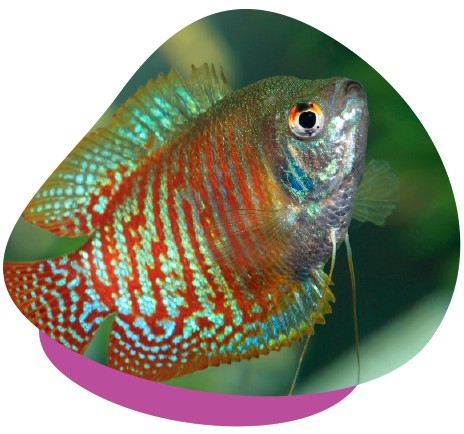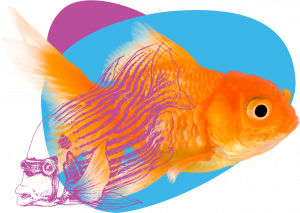

Tropical fish are some of the most popular home aquarium varieties. With the proper care and attention, tropical fish are hardy, active and easy to maintain. They are perfect for seasoned fish keepers or first-time fish owners.
Many different species of tropical fish are community fish and happily cohabitate in the right environment. They are vibrant and varied in colour, making them mesmerising to look at, and intriguing to display in any home or office.
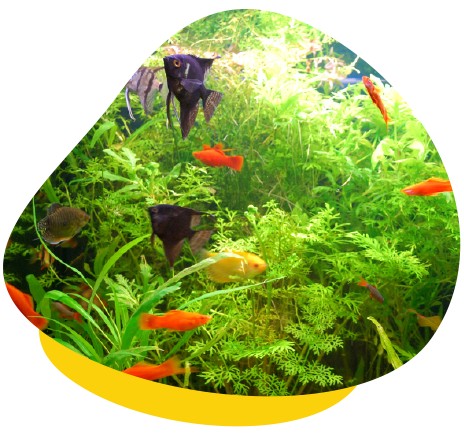
Tropical Fish Species
Some of the most common tropical fish species that are ideal for community aquariums include:
- Neon Tetra
- Guppy
- Molly
- Platy
- Zebra Danio
- Swordtails
- Silver Dollar
- Dwarf Gourami
- Plecostomus
- Angel Fish
- Tiger Barbs
- Cichlids
- Oscars
Can Tropical Fish Live Together?
Many of the species listed above will do well together. However, some species that are considered semi-aggressive, such as Angel Fish and Tiger Barbs, require more thought and planning.
Then there are aggressive tropical fish like Cichlids and Oscars, and these species are best suited to slightly more seasoned fish keepers and need to be carefully matched with other tropical fish for harmonious living.
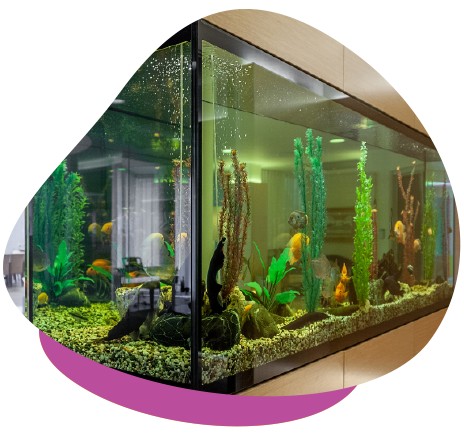
Setting Up A Tropical Aquarium
Time and consideration should be taken when setting up a tropical aquarium.
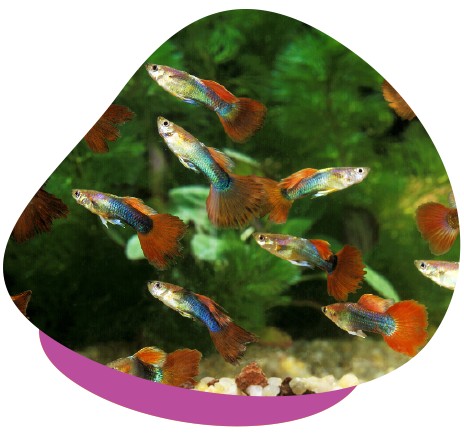
Choosing a Tank
When choosing a tank, you need to consider the types of fish you are planning on keeping, the size they will eventually grow and the number of fish (stocking density) you intend to house. This will dictate the size, position, space and stand required. Small tanks can fit into more spaces around the house; however, they are harder to manage in the long term and limit the number of fish you can house.
Temperature and Heating
Tropical fish will require heating in most climates. The ideal temperature for most tropical fish species is between 24-28 degrees. Most forms of heating come in intra-water heaters with internal thermostats. The thermostat can be set to your desired temperature. However, always check the actual temperature of the water with a separate thermometer, as internal thermostats aren’t always reliable.
Aquarium Lighting
Like land animals, aquatic species need a ‘day’ and a ‘night’. Tanks should not be housed next to windows, as sunlight can cause rapid spikes in water temperature throughout the day and can also contribute to algal blooms.
Instead, day and night cycles can be imitated by artificial lighting. Fluorescent and LED forms of light are suitable for tropical aquariums. A good rule of thumb is replicating the day/night-time hours. Alternatively, you can connect your lights to timers that automatically switch them off at a specific time of day.
Choosing a Filter
Filters can be divided into external and internal systems. Internal filters are limited with the amount of water they can process and are only suitable for very small tank volumes (<50L).
External filters are recommended for most tanks, as their ability to function externally allows them to be much larger and process much great volumes of water. Ideally, a filter should process 2-3 times the volume of water the tank holds every hour, e.g. if you have a 400L tank, it should be able to process 800-1200L/h.
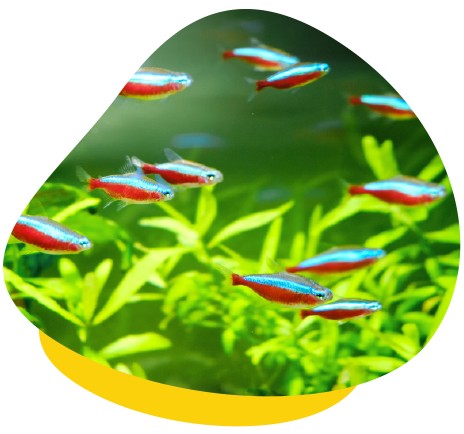
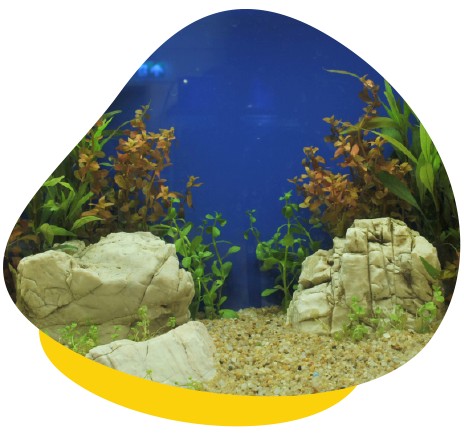
Cycling Your Tank
Before adding any fish to your aquarium, your tank needs to be cycled. On average, this process takes six weeks. The cycling of a tank refers to establishing its nitrogen cycle. Fish excrete ammonia in their urine and, to a lesser extent, their faeces. In a confined area such as a tank, ammonia will build up over time unless it is removed.
There are two ways to remove ammonia from your tank. The first is manually through partial water changes, and the second is through specific nitrogen-consuming bacteria. These bacteria convert ammonia into nitrite, and then other bacteria species will convert nitrite into nitrate. Each step along the process makes the nitrogen less harmful.
Over time, these nitrogen fixing bacteria will replicate in your tank; however, this process can be sped up by adding these good bacteria to your tank. Most aquarium or pet stores sell ‘bacteria seeding’ products. However, if you have a friend that runs a healthy tank, you can also borrow their filter media and ‘seed’ your own filter with bacteria. This must be done with caution to avoid spreading diseases between tanks.
It is very important not to add any fish to your tank before it has cycled. Both ammonia and nitrite are very toxic to most aquatic species at very low amounts and can rapidly kill fish. Nitrate is considered less harmful if levels do not chronically exceed 40ppm. Although nitrate is less toxic to your fish, nitrate elevations will also cause stress and affect your tanks health. In these cases, modification of feeding and cleaning regimes along with additional water changes are required.
Water Testing
In the first 6-weeks of setting up a tropical aquarium, performing a water test every 3-days is recommended. Once a tank is established, a weekly water test is recommended to catch any changes early.
Water test kits can be purchased from most pet stores. Ensure the kit includes pH, ammonia, nitrite and nitrate monitoring at a minimum. A cycling (established) tank should have ammonia at 0ppm, nitrite at 0ppm and nitrate at <40ppm. In general:
- A reading of high ammonia, zero nitrites, and zero nitrate means your tank has not started cycling.
- A reading of moderate ammonia, high nitrite and zero nitrate means your tank is halfway through the cycling process.
- A reading of low to zero ammonia, low to zero nitrite and a nitrate of <40ppm means your tank is very close to finishing its first cycle
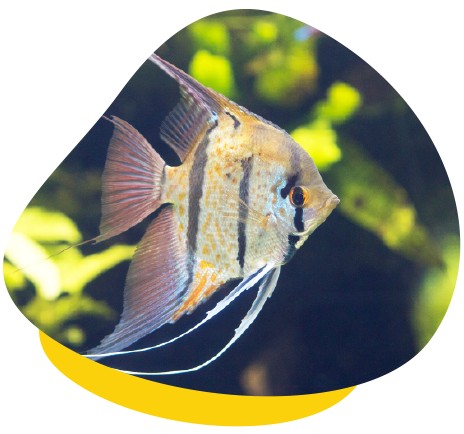
Do Tropical Fish Need Live Plants?
Live aquarium plants are not an essential part of a tropical fish tank setup, but they have their benefits. They provide oxygen and absorb carbon dioxide and ammonia that your fish produce. Live plants also offer a source of food.
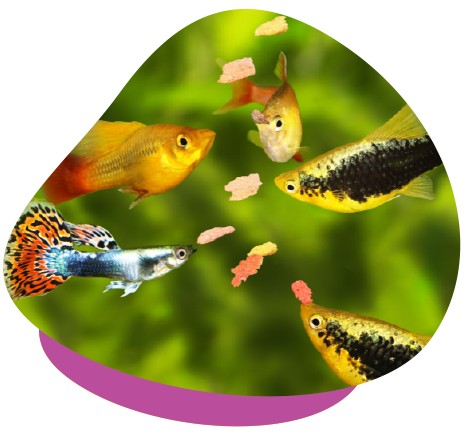
What Do Tropical Fish Eat?
In general, tropical fish require daily feeding with young fish requiring more frequent feeding than mature fish. They thrive on various protein-rich foods, including pelleted, frozen, and freeze-dried. Some species of tropical fish may also take live foods.
Giving a variety of foods can improve your fish’s physical and mental health by providing more varied nutrition and environmental enrichment. It is important not to overfeed your fish.
Overfeeding your fish can result in poor water quality, obesity, and other health issues. Monitor your fish’s intake to ensure you are not overfeeding. A good rule of thumb is to feed no more than what they can eat in 2-3 minutes although some species may need differ.
It is also important to consider the type of feeder your fish are. Some fish are surface eaters while others eat from the middle of the tank while others will scavenge more from the bottom.
Once your fish have finished feeding for the day, remove any excess food. This will help reduce ammonia build up and dirtying of the tank.
Signs That Your Tropical Fish Is Unwell
Changes to your fish’s behaviour, abnormal mobility, or erratic swimming, spending more time on the top or bottom of the tank, changes to breathing pattern (faster or exaggerated opercular movement), pale or dark gills, loss of scales, skin lesions, flashing (rubbing on their side), change to colour, bloating and visible weight loss can all indicate illness in your fish.
Sometimes, sudden death of a fish is the first indicator of problems with your tank but there are usually one or more of the previous signs listed that may have preceded this event.
Quarantine
To avoid spreading disease into your established tank, all new fish should be quarantined in a dedicated quarantine tank for a period of 2-4 weeks, during which time, diseases that may be lurking in these new fish can be detected prior to entering the general population.
Handy Tips
- Know your species. Before purchasing an aquatic animal, make sure you know what environment it lives in. The key to a happy pet is a healthy one.
- Not all tropical species can live together. Fish that swim fast may bully slower swimmers, whilst having too many surface dwellers will cause a build-up of debris on your tanks floor – research what species can cohabitate.
- Purchase a good water conditioner to dechlorinate tap water. Tap water is toxic to many aquatic animals over time.
- Never clean your tank or filter with tap water. Chlorine is an antibacterial agent and can destroy the good bacteria cycling your tank. Always clean your filter with water from your tank.
- Know where to seek help. If you have questions or if one of your animals is unwell, it is important to know who to contact. Not all vets will see aquatic animals, so make sure you know where your closest fish vet is. Some aquarium stores are also very experienced in aquariums and can aid you in non-emergency situations.
For more information on tropical fish, their husbandry and health, contact your local Unusual Pet Vets team.
